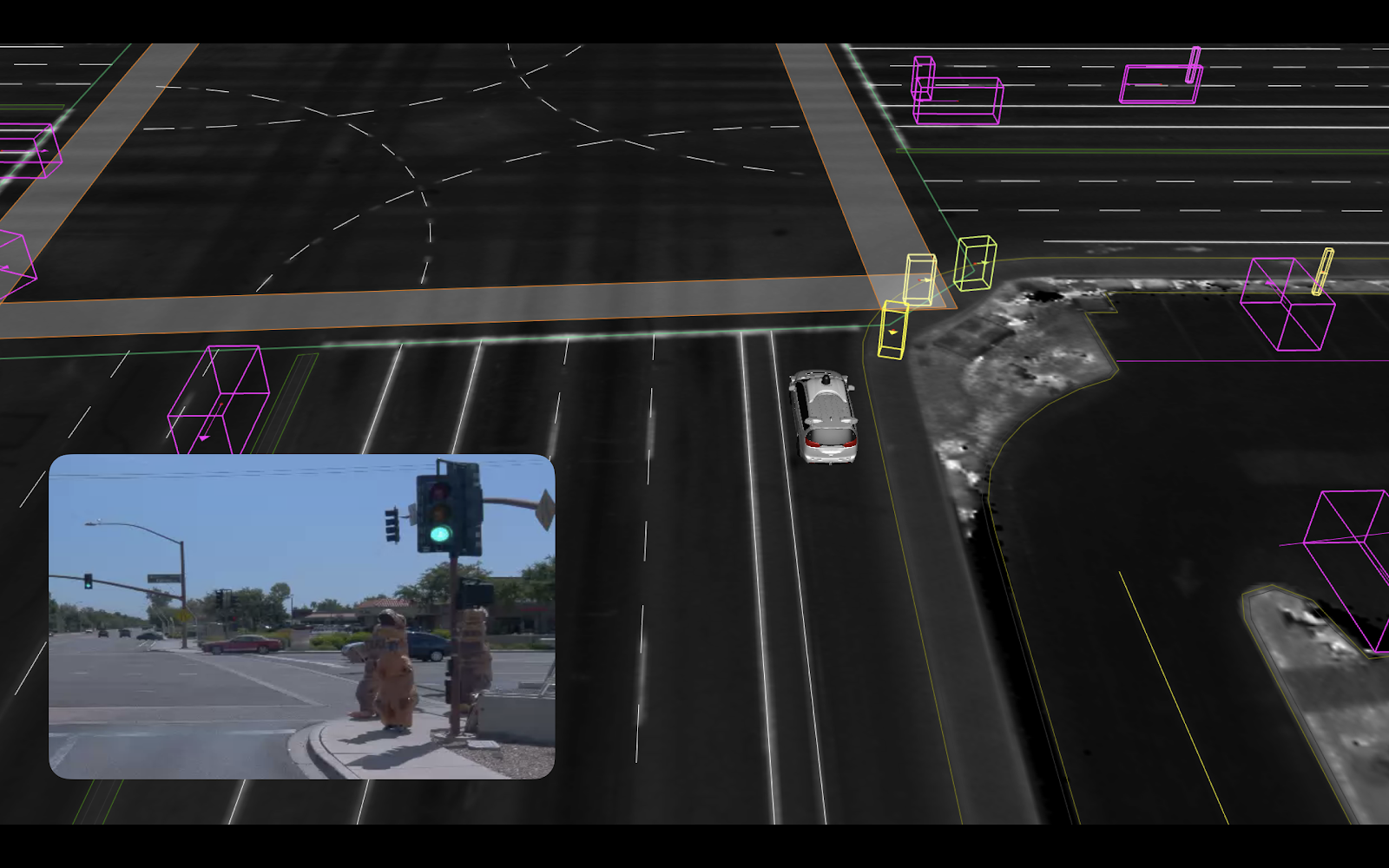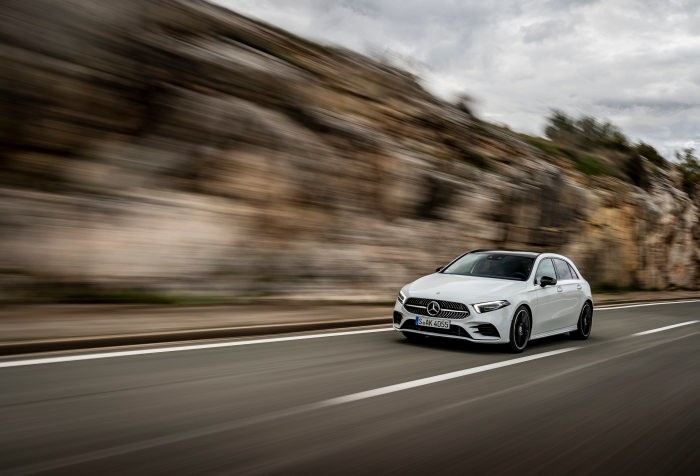News Press Release News Brand Wolfsburg, 09 May 2018 Volkswagen records double-digit growth in April The Volkswagen brand has once again stepped up its growth rate. With about 520,000 vehicles delivered in April, the brand recorded an increase of 11 percent compared with the prior-year figure for …more
Category: Official Press Release
Audi fleshes out its corporate strategy and plans to sell 800,000 electrified cars in 2025
Audi aims to sell approximately 800,000 fully electric cars and plug-in hybrids in the year 2025. At this Wednesday’s Annual General Meeting of AUDI AG, the Board of Management presents the updated “Audi.Vorsprung.2025.” strategy. To enable about every third customer to decide in favor of an e-model by the middle of the next decade, there… Continue reading Audi fleshes out its corporate strategy and plans to sell 800,000 electrified cars in 2025
News Release – Magna Opens New Aluminum Casting Facility in the U.K.
• New facility to supply structural castings to Jaguar Land Rover• Aluminum structural castings help reduce vehicle weight and complexity• 225,000-square-foot facility, employing approximately 300 people Please click HERE for a PDF version of the release. SAILAUF, Germany, May 8, 2018 – Magna has opened an aluminum casting facility in Telford, England, which will supply… Continue reading News Release – Magna Opens New Aluminum Casting Facility in the U.K.
TMC Announces Financial Results for Fiscal Year Ended March 31, 2018
Toyota Motor Corporation (TMC) today announced its financial results for the fiscal year ended March 31, 2018.
Toyota Announces FY2018 Financial Results
Toyota Announces FY2018 Financial Results
Google I/O Recap: Turning self-driving cars from science fiction into reality with the help of AI
Google I/O Recap: Turning self-driving cars from science fiction into reality with the help of AI By: Dmitri Dolgov, CTO and VP of Engineering This morning, we took the stage at Google I/O, Google’s annual developer conference, to share details on how Waymo is using artificial intelligence (AI) to make fully self-driving cars a reality. If… Continue reading Google I/O Recap: Turning self-driving cars from science fiction into reality with the help of AI
Schaeffler reports three divisions for the first time and confirms guidance for the year
HERZOGENAURACH, Germany, May 8, 2018 /PRNewswire/ — Global automotive and industrial supplier Schaeffler announced its quarterly results for the first three months of 2018 today. As a result of the organizational realignment initiated last year, this is the first time the company is also reporting on the performance of its three divisions – Automotive OEM (64.2 percent… Continue reading Schaeffler reports three divisions for the first time and confirms guidance for the year
Audi reports engine-management irregularities with V6 TDI version of A6/A7, generation C7
In the context of internal investigations of the diesel issue, Audi has discovered irregularities in the engine-management software of V6 diesel engines of Gen2 evo (200 kW). These engines are used in A6 and A7 models of generation C7, which are now being phased out. The Federal Motor Transport Authority in Germany and the vehicle… Continue reading Audi reports engine-management irregularities with V6 TDI version of A6/A7, generation C7
State-of-the-art diesel technology from the A- to the S-Class
08.
May 2018
Stuttgart
Press Contact for this Press Release (1)
René Olma
Communications Powertrain Technologies & Environmental
rene.olma@daimler.com
Tel: +49 711 17-93314
Fax: +49 711 17-91437
Mercedes-Benz A180 d AMG Line: Fuel consumption combined: 4,5-4,1 l/100 kmcombined CO2 emissions: 118-108 g/km*With the market launch of the new A-Class, the new diesel engines from Mercedes-Benz are now available from the compact class to the luxury class. With these engines, Mercedes-Benz vehicles achieve average nitrogen-oxide (NOx) emissions of between 40 and 60 milligrams per kilometer over many thousands of kilometers of driving on the road under the conditions of the Real Driving Emissions (RDE) measuring method. These emissions are significantly below the RDE limit of 168 milligrams per kilometer. This is made possible by an innovative package of combining engine and exhaust-gas aftertreatment, which has been introduced consistently over the past two years as part of the new generation of engines and is continuously being developed further.
Following the launch of the new generation of diesel engines in the E-Class (four-cylinder OM 654) and the S-Class (six-cylinder OM 656), the four-cylinder OM 608 is being introduced in May in the new A-Class A 180 d (fuel consumption combined: 4,5-4,1 l/100 km combined CO2 emissions: 118-108 g/km). The new diesel engines from Mercedes-Benz are therefore now available from the compact class to the large, luxury class. As is already the case with the OM 654 and OM 656, the OM 608 engine features a compact exhaust-gas aftertreatment system close to the engine as well as multiple exhaust gas recirculation (EGR) with high- and low-pressure EGR, which ensures that average nitrogen-oxide emissions are significantly below the current legal limits of the new RDE test method. For the first time, this model series also features an SCR catalyst with AdBlue® exhaust fluid. Mercedes-Benz now offers this technology in all current vehicle classes.
In the coming months, many more Mercedes-Benz models will be launched that are certified in accordance with Euro 6d-TEMP. By September 2018, more than 30 of the currently available models and more than 200 variants are to be changed over to Euro 6d-TEMP Norm (RDE Stage 1) – a full year before this is mandatory for all vehicles. Mercedes-Benz customers will therefore have an ever increasing range of such vehicles to choose from in the coming months.
“Mercedes-Benz’s new generation of engines already demonstrated two years ago, how the NOx-challenge in Diesel cars can be solved technically. We are fully committed to modern diesel engines as part of the drive mix for the future,” said Ola Källenius, Member of the Board of Management of Daimler AG, responsible for Group Research and Mercedes-Benz Cars Development.
Current Mercedes-Benz vehicles equipped with the latest diesel technology can achieve NOx emissions in a very low double-digit and sometimes even single-digit range in some RDE-measurements on the road. For instance, the technical inspection company TÜV Hessen tested a wagon version of the new C-Class with a new 1.6-liter four-cylinder OM 654 engine according to the currently applicable RDE regulations, and measured nitrogen-oxide emissions below 10 milligrams per kilometer in the overall cycle, both with and without cold starts. When a sedan version of the new C-Class with the same engine was tested in accordance with the RDE method, NOx emissions of approximately 10 milligrams per kilometer were measured.
However, average emissions over many thousands of kilometers under different conditions are much more meaningful than individual measurements. Mercedes-Benz diesel engines of the new generation (OM 654, OM 656 and OM 608) already achieve average NOx emissions of about 40 to 60 milligrams per kilometer on RDE journeys – also in city traffic. These NOx emissions are thus well below the current RDE limit of 168 mg/km and even below the laboratory limit of 80 mg/km. Organizations such as, for example, Dekra, TÜV or auto magazines have confirmed that very good results are achieved in road tests.
At low levels of engine load, for example while driving slowly, the effectiveness of exhaust-gas aftertreatment can be substantially enhanced due to the close proximity of the system to the engine and further developed exhaust-gas temperature management, thus significantly increasing the system’s effectiveness in the city.
The low levels of NOx emissions in real driving operation of vehicles with the new diesel engines explains why the market penetration of new generations of vehicles is an effective means of further reducing NOx emissions from traffic in urban areas.
Mercedes-Benz has already had the crucial innovations in the further development of diesel technology in series-produced cars for two years now. The four-cylinder diesel engine OM 654 with a combination of exhaust-gas aftertreatment close to the engine, stepped combustion bowls and further developed multiple exhaust gas recirculation was already introduced in the Mercedes-Benz E-Class in April 2016. Since then, Mercedes-Benz has systematically adapted its product portfolio to the new generation of diesel engines. For that purpose, the company has invested approximately three billion euros in research and production.
It is now also the turn of the C-Class, the company’s strongest-selling model series. With the changeover to the OM 654 diesel engine, the all-new 1.6-liter version is used for the first time. In the future, a diesel plug-in hybrid will also be added.
The new engines still have the potential for technical improvements: “We have already achieved enormous progress, but our engineers are of course developing the technology even further,” continues Ola Källenius. “Our goal is to arrive at average NOx emissions of around 30 milligrams per kilometer in RDE Stage 2 tests by 2020. And we are determined to achieve averages approaching 20 milligrams in the following years. We are targeting these figures in particular for our vehicles on RDE driving tests in cities.” One of the levers is the continuous improvement of the interaction of the various components in the overall system – which includes the highly complex engine-management system. On the other hand, further developed technology will also be applied in the coming years.
Links: Current information and positions relating to the diesel issue: https://www.daimler.com/diesel/en/
Download
Filter
Show thumbnails
Show list
Slideshow
Zoom
Preview
Details
Do you really want to delete the data record?
Please wait a moment …
Please wait a moment …
Please wait a moment …
Please wait a moment …
16C968_06
18C0056_038
18C0292_012
Loading
Dr. Rainer Fessel, new Director of the SEAT plant in Martorell
Dr. Fessel will head a factory with more than 8,000 direct employees and a daily output of 2,300 vehicles


